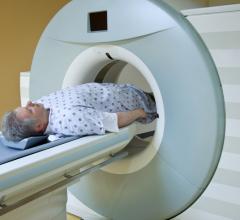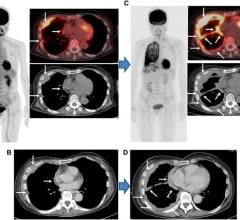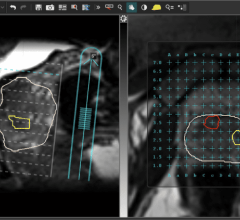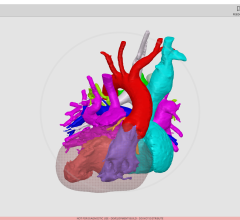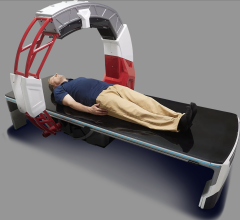
February 24, 2010 - Researchers found that when using standard 64-detector row helical scanning as a benchmark, the effective radiation dose was reduced by 91 percent from 35.4 millisieverts (mSv) to 4.4 mSv using optimized 320-detector row volume scanning.
Researchers from Columbia University and the National Heart, Lung and Blood Institute conducted the study, published in the March issue of Radiology, in which they performed a coronary CT angiography exam, and determined that an imaging exam of the heart using the latest generation of CT technology exposes patients to as much as 91 percent less radiation than standard helical CT scanning.
Many coronary CT angiography exams are conducted on 64-detector row CT scanners, which can image four centimeters at a time. The latest generation of CT technology, a 320-detector row volume CT scanner, can image 16 centimeters - or the entire length of the heart - in a single rotation and within a single heartbeat.
In his study, Dr. Einstein and a team of researchers compared the radiation exposure incurred during a coronary CT angiography procedure using a 64-detector row helical scanning and volume scanning, using a 320-detector row volume CT scanner. Phantoms simulating the male and female body were imaged using six different scan modes.
Using standard 64-detector row helical scanning as the benchmark, the effective radiation dose was reduced by 91 percent from 35.4 millisieverts (mSv) to 4.4 mSv using optimized 320-detector row volume scanning.
"By imaging the entire heart in one piece, volume scanning eliminates artifacts due to seams or gaps between image sections," said Dr. Einstein. "Moreover, the x-ray tube is left on for only a brief duration, as little as .35 seconds."
According to Dr. Einstein, state-of-the-art CT technology emphasizes optimal image resolution with the ability to lower radiation dose through a variety of features and scan modes that adjust and modulate the dose based on the specific needs of the individual patient.
"As CT technology advanced from 16- to 64-slice capabilities, the radiation dose went up significantly," he said. "Today, technology development is going in the opposite direction, reducing radiation exposure."
Dr. Einstein emphasized that practitioners must pay careful attention to using the appropriate scan mode to obtain diagnostic information with the least amount of radiation exposure to the patient.
"Radiation Dose from Single-Heartbeat Coronary CT Angiography Performed with a 320-Detector Row Volume Scanner." Collaborating with Dr. Einstein were Carl D. Elliston, M.A., Andrew E. Arai, M.D., Marcus Y. Chen, M.D., Richard Mather, Ph.D., Gregory D. N. Pearson, M.D., Ph.D., Robert L. DeLaPaz, M.D., Edward Nickoloff, D.Sc, Ajoy Dutta, M.S., and David J. Brenner, Ph.D., D.Sc.
Disclosure: Dr. Mather is an employee of Toshiba America Medical Systems. Dr. Mather provided recommendations but had no control over the data included in the manuscript.
For more information: www.rsna.org


 August 09, 2024
August 09, 2024 

